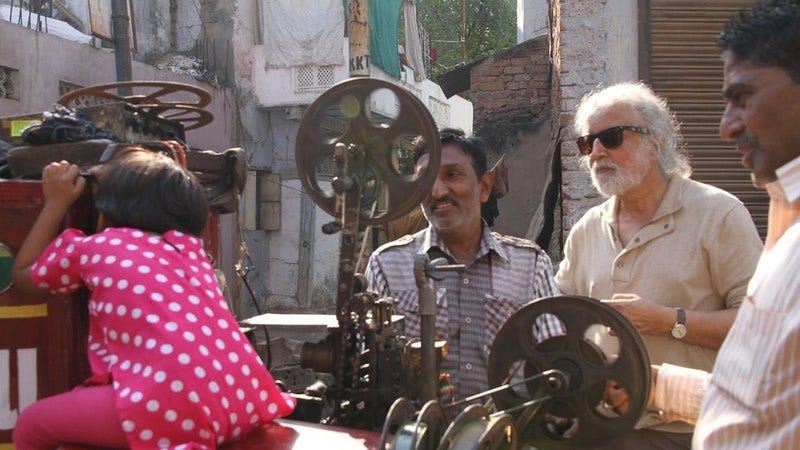Heartland: Keepers of the Magic

For tickets and showtimes, please click here.
What would it be like to watch some of the most beautiful images cinema has produced over the last 40-50 years all strung together, while sitting at the knee of the masters of light who helped create them? You don’t have to wonder, because that is exactly the experience of watching “Keepers of the Magic.”
This excellent documentary directed by Vic Sarin interviews a dozen or so of the greatest cinematographers of the modern film age, including Victtorio Storaro (“Apocalypse Now”), Cesar Charlone (“City of God”), John Seale (“Mad Max: Fury Road”), Philippe Rousselot (“Dangerous Liaisons”), Roger Deakins (“The Shawshank Redemption”), Bruno Delbonnel (“Amelie”) and even the late, great Gordon Willis (“The Godfather”), gone three years now.
We also get to visit with a few directors, including John Boorman, George Miller and Sam Mendes, who talk about working with the “keepers of the magic,” men – and it’s practically all men, historically – who are often the second most important person on a movie set after the director.
You might think just images and blathering by artists wouldn’t be enough to hold our attention for 86 minutes, but the opposite is actually true. I was struck how many times I saw imagery from films I’d seen and largely dismissed – like 2005’s “Jarhead” – that suddenly became mesmerizing when seen through the eyes of the people who created them.
There’s some technical language as you’d might expect, but this is not an inside-baseball discussion about different types of lenses and film stocks. This most exclusive club of directors of photographer – all Oscar winners or nominees – has much to say, and differ about, in how they created the look of these films. There’s often side-by-side or frame-within-frame analysis, such as a comparison of two train sequences from the “Harry Potter” series shot by different people.
“In all my professional work, I'm searching for balance -- light and shadows, warm color, cool color,” Storaro says. He takes us through his elaborate theory of the use of color in “The Last Emperor” – green stands for knowledge, yellow for youthful joy, etc. Others, though, talk about the joy of desaturating a film to be nearly black-and-white.
The men also do not agree on other things, like storyboarding vs. creating the look of the film on the fly, framing the center of action or natural light vs. shooting on a set.
Seale talks about the “lucky mistakes” that happen with available light, such as a shot from “Witness” that was literally thrown together in minutes. Retorts Willis: “Nature? I hate it!”
One of the biggest changes in the industry – and the job description of cinematographers – was the advent of on-set monitors that allowed everyone to see a close approximation of what had just been shot right away. The men talk wistfully about the days of “dailies,” when rushes of the footage they had shot would arrive on the set a few days later after processing, and the entire crew would take part in watching snippets of their work as it was being created.
There is also a spirited discussion on the use of celluloid film to shoot, which is rapidly being replaced by digital cameras. Most admit that film is “never coming back.” Again, Willis offers his rebuttal from beyond the grave, praising film stock: “It’s like making fudge – it looks better, it smells better, it’s got a life to it.”
Though all of the masters we talk to are older veterans – ranging from perhaps age 50s up to 80s – most of them acknowledge that the use of computer-generated imagery has advanced the breadth of what they’re able to show on a screen. We see, for example, the raw footage from “Mad Max: Fury Road,” which is certainly gripping, and then how it looks after digital enhancement, from the warmed-up colors to entire skies that have been swapped out with still photographs taken from a hotel balcony.
Which isn’t to say there isn’t nostalgia for the old days of practical effects, which perhaps were chintzy but had an organic solidity to them. Director Boorman: “Before CGI, whatever people saw on the screen, it had occurred at some place and time.”
If you’re any kind of serious lover of cinema, “Keepers of the Magic” is essential viewing for a glimpse of the important work of the man behind the man behind the camera.



